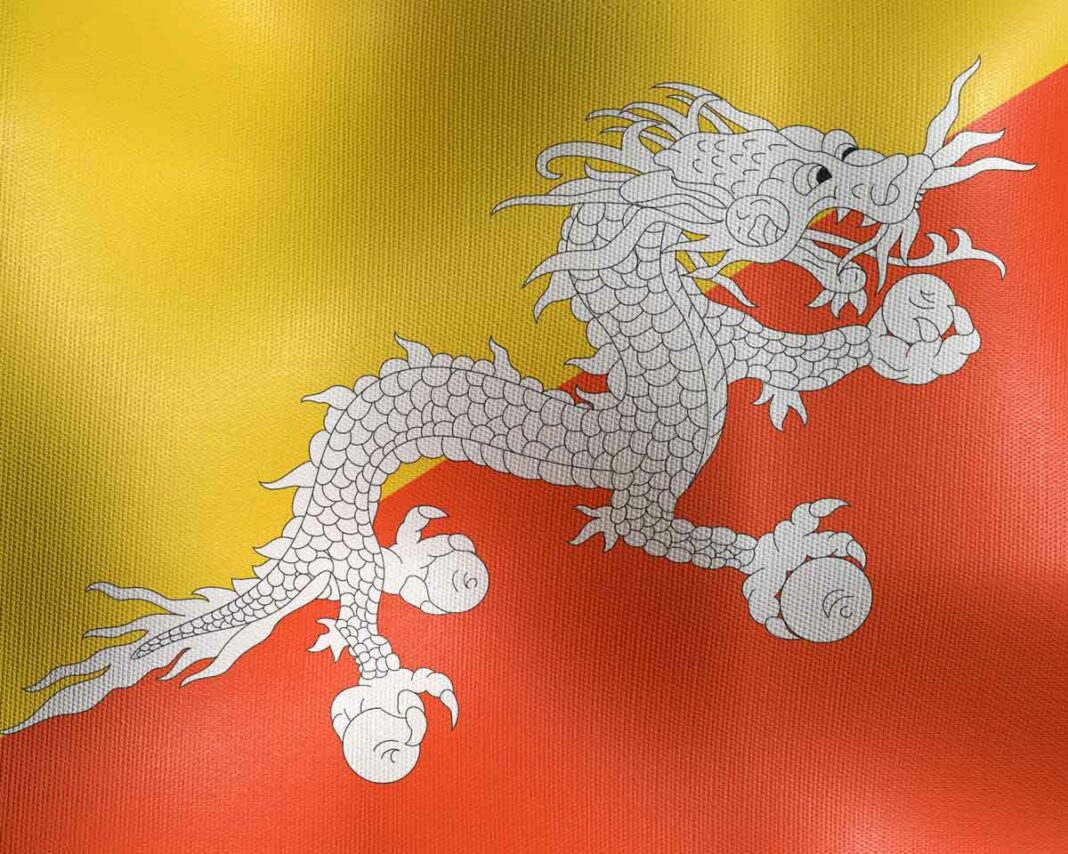Bhutan’s King, Jigme Khesar Namgyal Wangchuk, began his eight-day trip to India arriving in Assam on November 3 where he visited the Kaziranga National Park and the Kamakhya Temple before coming to New Delhi on November 6, meeting Prime Minister Narendra Modi and holding bilateral discussions. The King was accompanied by Queen Jetsun Pema, their two children, and other officials of the Royal Government of Bhutan.
During the King’s visit, India and Bhutan agreed to expand bilateral cooperation in trade, technology, cross-border connectivity, mutual investments, education and people-to-people contacts. Notably, both sides agreed to undertake the Final Location Survey (FLS) for the proposed rail link connecting Kokrajhar in Assam to Gelephu in Bhutan in consultation with Bhutan and Indian support. Both sides also agreed to “consider” establishing a rail-link between Banarhat (West Bengal) and Samtse (Bhutan).
Other bilateral agreements included: designating Darranga (Assam) and Samdrup Jongkhar (Bhutan) as immigration check post; positive consideration by India for concessional financing (skill development and capacity building) under Bhutan’s GyalSung Project; designate Haldibari (West Bengal) – Chilahati (Bangladesh) rail route as additional Bhutan-Bangladesh trade route; bridge financing by India for period between Bhutan’s 12th and 13th Five Year Plans; upgrading facilities on both sides of the integrated check posts; strengthen collaborative framework in environmental conservation, wildlife preservation and forestry; additional MBBS seats for Bhutanese students; double outlay for Bhutanese students pursuing higher education in India.
It may be recalled that barely two months after the India-China Doklam standoff was peacefully resolved, satellite images in media on August 28, 2017 showed continuing PLA build-up close to the contested point on Doklam. Subsequent images of September 6, 2017 showed 2,000-3,000 PLA soldiers (possible Brigade) deployed north of Yadong town; within two hours striking distance.
Fresh satellite imagery of January 17, 2018 showed PLA deployed close to the standoff area: concrete posts, seven helipads, several dozen armoured vehicles, one-two mechanized regiments, two regiment worth tank-transporters; 100 plus B-vehicles; two- storey high observation tower less than 10m from forward Indian Army trenches to observe our troop movement beyond Kupup; large number of fighting posts on almost every hillock on North Doklam plateau, double-layered communication trenches; roads to cover the North Doklam plateau; four bulldozers and four tippers for road construction beyond the contested point.
China has also constructed dual-use military villages on Bhutanese territory, which according to American analysts have elements of air defence and electronic warfare. Bhutan has denied these villages are in Bhutan – same as our external affairs ministry (MEA) is non committal on the 150-house Chinese village built in Arunachal Pradesh during the continuing India-China standoff.
There is increased Chinese pressure on Bhutan through accelerated border talks. The ‘Expert Group’ of the ‘Bhutan-China Boundary Issue’ held its 12th meeting, in Thimphu in May 2023, followed by the 13th meeting in August, held in Beijing; declaring speeding up the MoU for a ‘Three Step Roadmap’ and establishing a ‘Joint Technical Team’.
At the ‘25th Round of Boundary Talks’ between Bhutan and China held in Beijing during October 2023, a bilateral agreement on ‘Cooperation Agreement’ on ‘Responsibilities and Functions of the Joint Technical Team (JTT) on the Delimitation and Demarcation of the Bhutan-China Boundary’ was signed. The ‘Three Step Roadmap’ was also reiterated.
Mao Zedong had claimed Bhutan as one of the five fingers of Tibet (annexed by China), the others being Ladakh, Sikkim, Nepal and NEFA (now Arunachal Pradesh). China has been claiming entire Doklam Plateau and in the past even offered equivalent land in exchange to Bhutan in the north. Doklam Plateau would enable PLA deployment on the Jhampari Ridge, leaning on to the Siliguri Corridor which will also come within artillery range of the PLA. PLA occupation of the Jhampari Ridge will also turn the flanks of the Indian deployment in East Sikkim.
China is active behind-the-scenes in elections of chosen countries; Maldives being the latest example. National Assembly elections in Bhutan are scheduled to be held November 30, 2023 and January 9, 2024. 47 members are elected from single-member constituencies. In the primary elections, voters cast votes for political parties. The top two parties then field candidates in the main round of voting, in which members are elected using first-past-the-post voting.
Bhutan hosts foreign missions from India, Bangladesh and Kuwait. But it is a matter of time for China to establish diplomatic relations with Bhutan. In fact, China may build the biggest embassy in Thimphu considering it has the largest embassy in a small-sized country like Seychelles (455 sq km) compared to Bhutan (38,394 sq km). In our case, the policy bankruptcy is apparent from the fact we are now talking of rail connectivity with Bhutan after decades of road-rail development in Tibet by China and the PLA having already come inside Bhutan. China will push road-rail connectivity to Bhutan in no time once diplomatic relations are established between the two countries..
India is viewed as the de-facto security guarantor for Bhutan. However, the Bhutanese side is privy to the following: heavy PLA deployment right next to the Doklam Standoff area (observed in January 2018) was blacked out in Indian media; thousands of sq km territory lost to China in eastern Ladakh during 2020 but India denies any loss; no protest against Chinese villages constructed in Arunachal Pradesh during the standoff, leave aside guaranteeing security against China constructing villages in Bhutanese territory.
With the continuing India-China standoff along the entire LAC, what is the security guarantee India can provide to Bhutan against further Chinese encroachments or an outright advance to take entire Doklam Plateau? It is not without reason that recent satellite pictures are showing heavy PLA deployment opposite Arunachal Pradesh. In 2020, China for the first time claimed the Sakteng Wildlife Sanctuary in eastern Bhutan, which China can access only through Arunachal Pradesh in India.
There is a high probability of simultaneous offensive actions by China in Bhutan and Arunachal Pradesh; Thanksgiving to the US-led West trying to bring the opposition in power in Bangladesh that would further increase Chinese influence in the Subcontinent. Even otherwise, India would be faced with lack of political will to rescue Bhutan against Chinese military provocations. Recent media reports state that India is deploying additional police forces for the security of the Siliguri Corridor; perhaps sensing what is coming.
The author is an Indian Army veteran. Views expressed are personal.




















[…] ~ If you need to contribute an article/story, please get in contact at: news4masses[at]gmail[dot]com […]